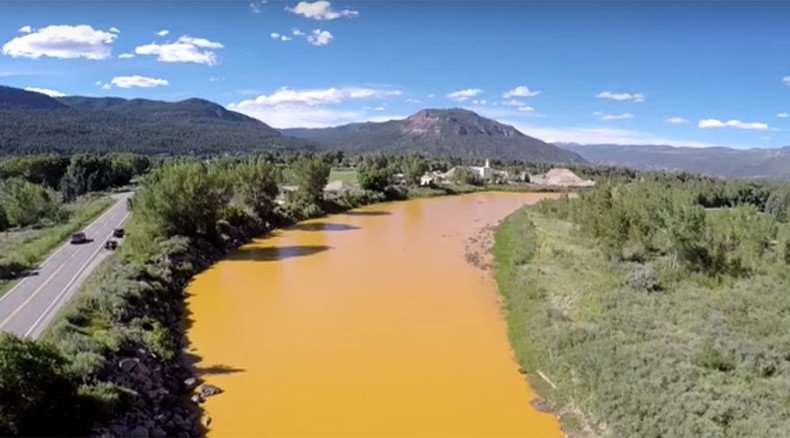Toxic sludge in contaminated river reaches New Mexico, communities have 90-day water supply

Toxic waste, including arsenic and lead, which seeped into a river in southwest Colorado, has now crossed the state border into New Mexico. More than 550 gallons per minute are entering the water flow system according to the Environmental Protection Agency, which caused the spill.
The agency says it should have the results of samples undergoing lab testing soon, so they can find out just how contaminated the river has become. Aside from lead and arsenic, federal officials say the spill also contains, cadmium, aluminum, copper and calcium.
High levels of arsenic can cause blindness, paralysis and cancer, while lead poisoning can create muscle and vision problems in adults and can be fatal for children.
"We're busting our tails to get that out," Environmental Protection Agency Regional Director Shaun McGrath said, as cited by AP. "We know the importance to people to have this information."
READ MORE: EPA spills 1 mln gallons mine waste, turns river in Colorado orange
The bright orange toxic sludge, which entered the Animas River in Colorado, has now crossed the state border into New Mexico and reached the city of Aztec on Friday night. Local communities in both states are not happy and have blasted the Environmental Protection Agency (EPA) for being slow in warning residents after the spill took place.
"There's not a lot we can do. We can keep people away (from the river) and keep testing. We still don't know how bad it is," San Juan County Emergency Management Director Don Cooper said, according to AP.
Durango, Colorado: EPA's Animas River mine disaster. Before & after : pic.twitter.com/Wi9g0I6Qr7
— Anonymous (@YourAnonNews) August 9, 2015Officials in the cities of Aztec and Farmington say they have shut down the river’s access to water treatment plants, adding that the communities had a 90-day supply of water.
The Animas flows into the San Juan River in New Mexico, and the San Juan flows into Utah, where it joins the Colorado River in Lake Powell. There are also reports that the contaminated water is heading towards Utah.
The EPA says they have finished building two containment ponds, which are aimed at treating the toxic sludge in the river. However, this is very much a short-term plan, while the long-term issue of cleaning up the spill will take some time according to McGrath.
“The sediment, the metals that are in that sediment are going to settle out to the stream bottom," he said. "As we have storm surges, as we have flooding events, that sediment can and likely will get kicked back up into the water. We're going to have to do ongoing monitoring," McGrath added.
A look at the bottom of the Animas River on Saturday sure looks allot different than it did a few days ago. pic.twitter.com/HwNj8jC1nC
— DurangoHerald (@DurangoHerald) August 9, 2015It is estimated that over one million gallons of toxic waste has already found its way into the river. The spill was caused after the EPA was investigating the abandoned Gold King Mine on Wednesday together with the state Division of Reclamation, Mining and Safety. They accidentally breached a debris dam that had formed inside the mine and this triggered the release of the waste into Cement Creek, a tributary of the Animas River in San Juan County.
Ironically, the initial goal was to find a safe way to pump out the wastewater from the mine, which was abandoned in 1923 and treat it, EPA spokeswoman Lisa McClain-Vanderpool said.












